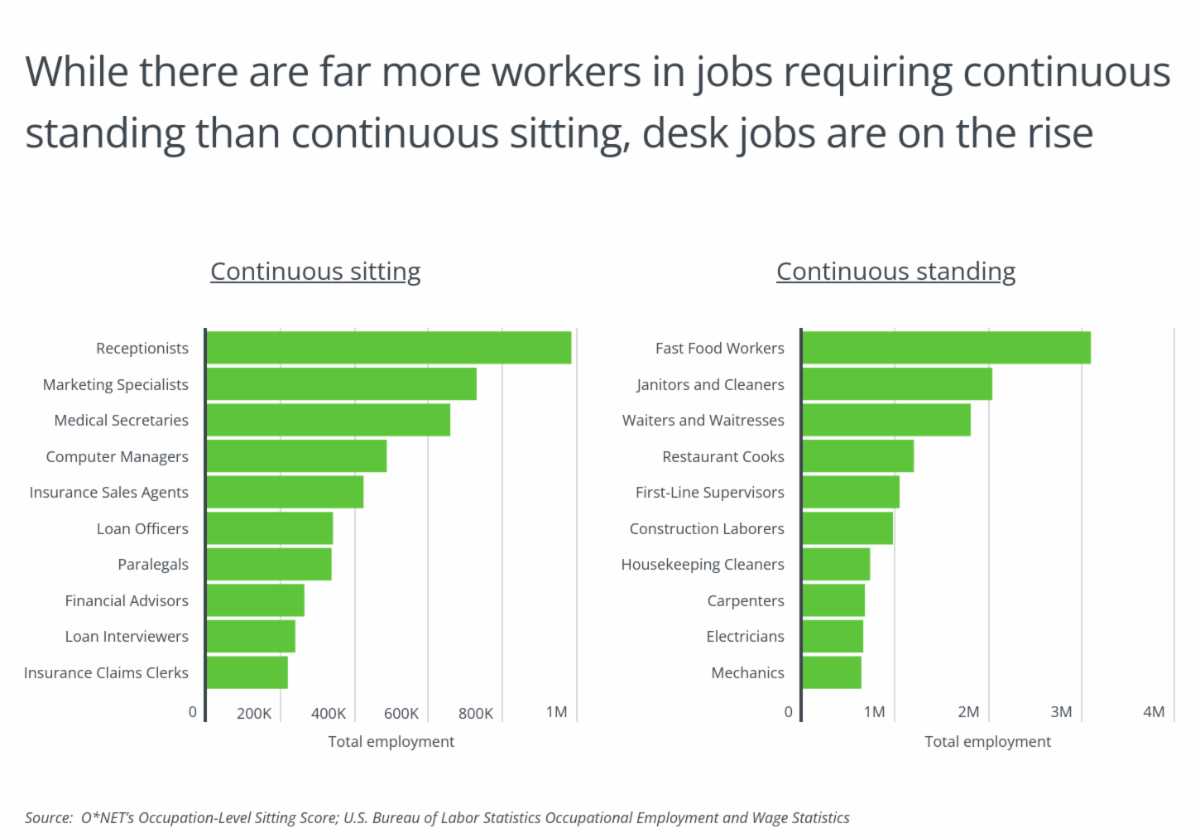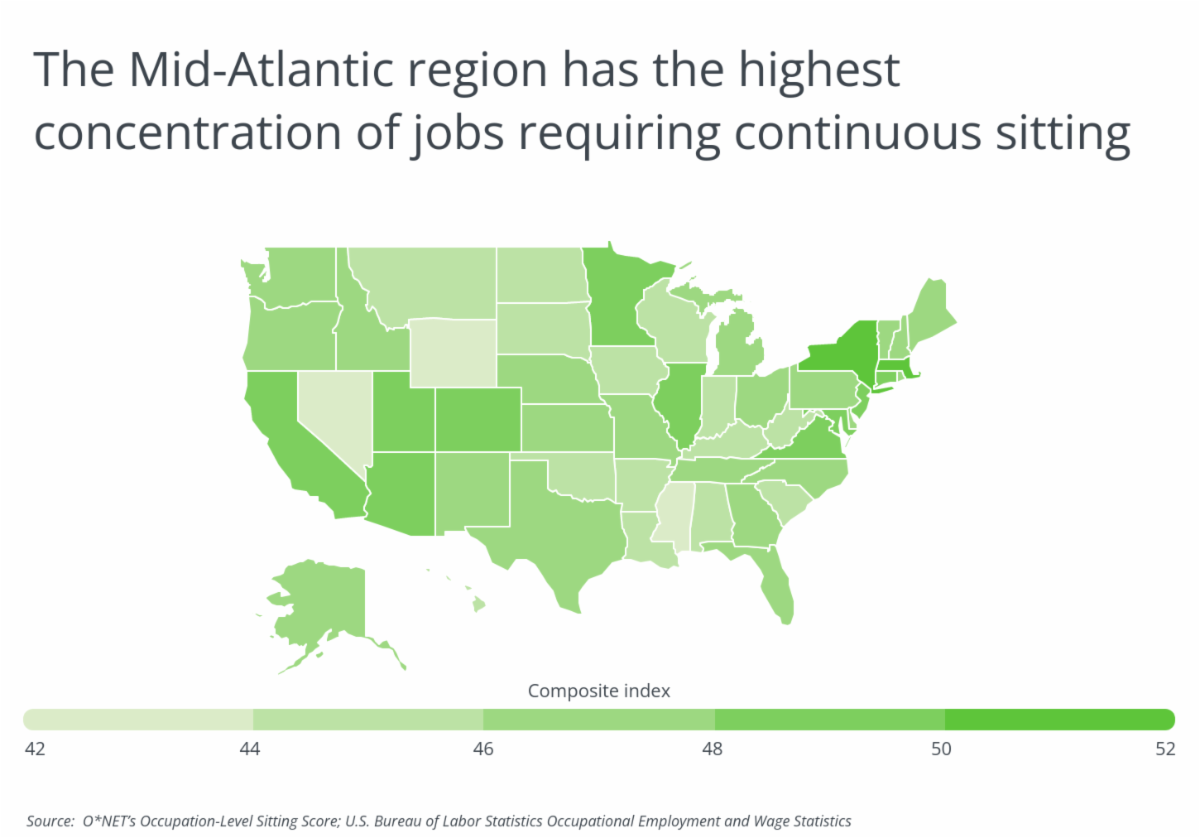States With the Highest Concentration of Workers Who Sit vs. Stand
Tuesday, June 21st, 2022
In recent years, public health officials have been trying to raise awareness of the negative effects of a common daily activity: sitting.
While sitting can be helpful for resting and maintaining the body, sitting for prolonged periods with limited physical activity reduces energy expenditure and cardiovascular fitness, which contributes to a number of adverse health conditions. Sitting can increase the likelihood of obesity, blood clots, high blood pressure, high blood sugar, and high cholesterol. It may also increase the risk of heart disease, diabetes, and even cancer. It affects posture, stiffens joints, and contributes to tightness and strain in the back, hamstrings, and hips. With this long list of potential health consequences, some health professionals argue that “sitting is the new smoking.”
One reason that sitting has received increased attention as a public health concern is that people are spending more time sitting while at work. Up until the mid-20th century, much of the economy in the U.S. was centered around jobs in fields like manufacturing and agriculture that required workers to stand and engage in other physical activity. Increasingly, however, the modern economy emphasizes office jobs that are more sedentary in nature. This trend has only accelerated with the adoption of technologies—from phones and faxes to computers and the internet—that allow workers to complete more tasks and communicate with coworkers or customers from their desks. Today there are 83% more sedentary jobs in the U.S. than there were in 1950.
Despite this trend, jobs that require continuous standing do remain more common than jobs that require continuous sitting. There are still nearly three times as many workers in the ten most common professions that require continuous standing than the ten most common professions for continuous sitting, according to data from the U.S. Bureau of Labor Statistics and O*NET. Many of the standing-heavy occupations are concentrated in fields like food service and construction, while the most common seated occupations include professions like receptionists and medical secretaries, jobs in office-based industries like finance, insurance, and law, and fast-growing fields like market research and computer and information systems.
 Sitting and standing jobs are not equally common across the U.S. due to differences in locations’ economic makeup. States including Nevada—which has a large hospitality and food service industry—and Mississippi—which has many jobs in agriculture and manufacturing—are the leaders in jobs with continuous standing. Northeastern states like New York, Massachusetts, and Maryland have economies with more workers in fields like finance, professional services, and information technology that are primarily conducted in offices. Accordingly, those states lead the nation in concentrations of workers who sit continuously.
|



